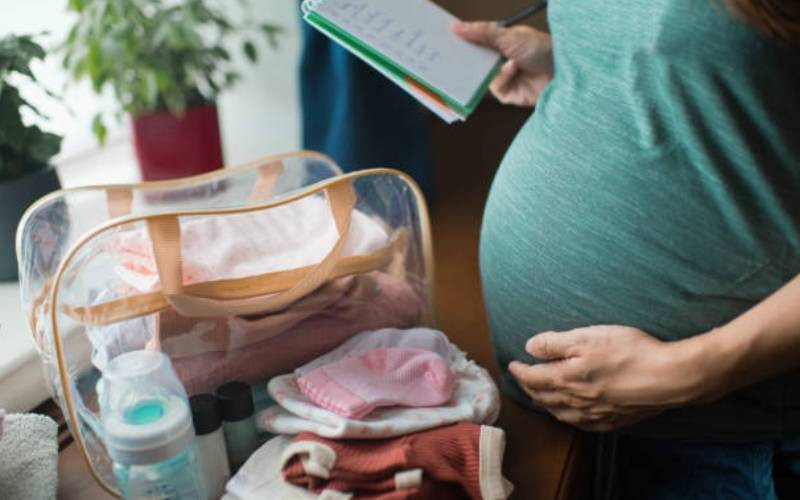
The rate of Caesarean section deliveries is on the rise in Kenya. Are some obstetricians scalpel-happy and prescribing unnecessary Caesarian sections to hapless mothers? GARDY CHACHA explores.
Before the nine months of pregnancy were over, Maurine Musyimi wanted to fully savour each day. She was expecting her first child and excited about it.
Maurine knew that labour would be painful and was prepared for it.
"I knew what was coming my way," she says. "And I was at peace with it. I was actually looking forward to the birth. I was ready to push. I couldn't wait to hold him in my arms."
But Maurine never got the chance to push. Instead, she underwent a caesarean section; a one hour surgery where a baby is birthed through an incision in the lower abdomen.
"I had been in labour for nearly 14 hours. The doctor analyzed me and said that my son's heartbeat was going low. I was informed that I could lose the baby if he didn't come out soon," Maurine recalls.
Maurine was exhausted and in pain. She was weary and worried for her son and herself. So, she did what any mom-to-be would do. She consented to the surgery.
"I was in too much pain and I was honestly worried for my unborn child," she says.
The assessment that the doctor offered her was that she was not dilating. Her pelvis was not opening up for the baby to come through.
When she made her way to the hospital at the start of contractions, she had no clue as to how much her labour had progressed. To fast track labour her doctor induced her with an intravenous drip. He also, manually, broke her water.
Maurine, who lives in Nairobi, is just one among an increasing number of expectant mothers who end up going under the knife contrary to their expectations.
And while Maurine understands that Caesarean section, as a medical procedure, saves lives, she wonders why it feels like the obvious option for many doctors.
"In my circle of friends, many have undergone Caesarean section. It is normal," Maureen says. Only that Caesarean section is not normal. It is not the first mode of birth. It is not an over-the-counter drug that can be picked and used at whim.
Dr Elly Odongo, a gynecologic oncologist at Moi Teaching and Referral Hospital says, "When a woman arrives for delivery, unless she has previous history that should warrant a Caesarean section to be done, the procedure should not be the first option."
The World Health Organisation (WHO) recognises that Caesarean sections are often performed without medical need. This, they say, puts women and their babies at a risk of short and long-term health problems.
"In recent times some medical practitioners have made Caesarean section an easily available option," opines Lucy Muchiri, a trained nurse and a midwife. "Knowing that a Caesarean section costs a lot more than normal delivery, and it lasts less than an hour, is an irresistible deal for a medic."
WHO has set a caesarean section rate of between 10 and 15 per cent.
According to the organisation, studies show that when Caesarean sections rise towards 10 per cent across a population, the number of maternal and newborn deaths decreases. However, there is no significant change from that point onwards – when the rate goes above 10 per cent.
"Every hospital, clinic, or medical practice, needs to conduct regular audits of the procedures they have performed periodically. If the number of Caesarean sections they have performed is beyond 10 per cent, they need to investigate," Dr Odongo says.
Just like Maureen, Amira Adhiambo gave birth through a Caesarean section at a Nairobi hospital though she had arrived ready to push.
"I went to the hospital because I had a feeling that my labour had already started," she says. "The contractions were still weak but the doctor said that I should be admitted."
Nothing much had happened between 10pm [when she was admitted] and 7am the next day.
"The doctor came that morning and broke my water – to increase the pace of labour and hence faster birth," Amira says.
There was still little sign that the baby was coming at noon when she was given a similar intravenous drip as Maurine to progress labour.
Amira was told to wait a little longer. By 4pm, the doctor told her, the baby will be here. The clock struck 4pm then 5pm and still there was no baby. On further checkup it was determined that her cervix had not dilated enough.
And so, to prevent a tragedy [she was told she could lose her baby] the doctor proposed that a Caesarean section be done.
"I was in too much pain and too exhausted to refuse the Caesarean section. I consented and the Caesarean section was done – but it cost me Sh100, 000. Sh70, 000 more than I would have paid for a normal delivery," she says.
The surgery was successful and Amira was able to leave the hospital a few days later with her daughter.
"All went well but sometimes I think that maybe the doctor was wrong in breaking my water; not giving the labour a chance to progress naturally," she says.
Last February, the National Health Insurance Fund (NHIF) called for research to determine why over 42 per cent of women seeking maternity services ask for Caesarean section as opposed to a normal delivery.
When an expectant woman asks for Caesarean section to be done, in the absence of qualifications, the procedure is known as elective Caesarean section.
"Our laws don't allow for elective Caesarean section. A Caesarean section is done when the situation calls for it. For instance: where there is previous scarring of the uterus, where there is history of two previous Caesarean sections, when birth is prolonged, when normal birth has risks against either the mother or the foetus, or when the baby presents in abnormal position," Dr Odongo says.
However, there is no transparent way, both in private and public facilities, to determine if a Caesarean section is elective.
Maureen's birth was handled at a leading private hospital in Nairobi. Her medical bill, a six figure sum, was paid for by medical insurance.
"I believe it was not for the money. I hope it was not for the money," she says.
SIDEBAR
WHAT YOU NEED TO KNOW
Dr Elly Odongo says that there are five things to keep in mind for any mother-to-be.
1. The obstetrician's role is to support the woman in the decision making process to choose a delivery mode based on information given and governed by medical ethics.
2. Do not be quick to reject emergency interventions because in some situations, it is the safest option.
3. When a woman is a low risk patient – delivering for the first time – there is reason to seek a second opinion when the doctor proposes a CS because the procedure affects the entire obstetrics career of the woman. When the first birth is by CS, there is almost a 90 per cent chance that the next birth will be through the same procedure and thereafter, it rises to 100 per cent.
4. When one is expecting twins and the pregnancy is a.) Low risk b.) Twin one (first twin) in cephalic presentation; one can question the need for a CS.
5. Also, based on the knowledge and information given to the woman, if she feels that it is a "provider preference" Caesarean section, based not on existing circumstances, she can ask for a second opinion.
 The Standard Group Plc is a multi-media organization with investments in media platforms spanning newspaper print
operations, television, radio broadcasting, digital and online services. The Standard Group is recognized as a
leading multi-media house in Kenya with a key influence in matters of national and international interest.
The Standard Group Plc is a multi-media organization with investments in media platforms spanning newspaper print
operations, television, radio broadcasting, digital and online services. The Standard Group is recognized as a
leading multi-media house in Kenya with a key influence in matters of national and international interest.






